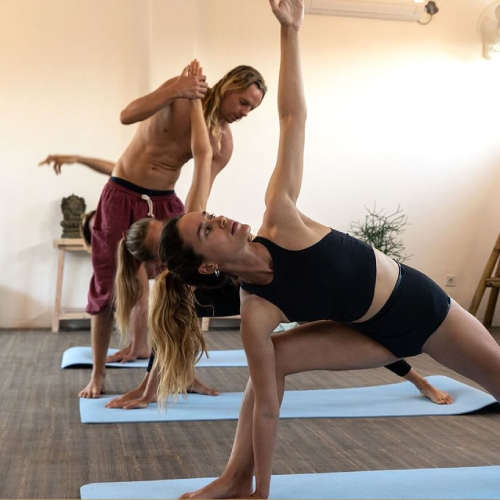General Description
Syllabus of Yoga Volunteer (YV)
1. Name of the Certification: Yoga Volunteer (YV)
2. Requirement/ Eligibility: Open for all. there is no eligibility criteria
3. Brief Role Description: For promotion o f well being o f oneself and society at large; assist in conducting group classes for Yoga Volunteer, Yoga classes in the park, Yoga related IDY programs. Can be part of Fit India Movement. Can conduct Yoga Break protocol in work places.
4. Age: No age limit
5. Duration of course: Equivalent to not less the 36 hours.
6. Certification o f Yoga Volunteer: The candidate who has 80% attendance in the class shall be eligible for certification. Certificate to the candidate shall be issued after getting the report from the institution about the attendance o f the candidate and the program conducted.
Course Content
Unit 1. Theory
- 1.1 Meaning, History and Development of Yoga.
- 1.2 Schools of Yoga.
- 1.3 The fundamentals of Yoga.
- 1.4 Yogic Practices for Health and Wellness.
- 1.5 General guidelines for Yogic Practice.
- 1.6 Yogic principles of Food.
Unit 2. Practical
2.1 Prayer: Concept and recitation of Pranava and hymns.
2.2 Cleansing Practice (Technique, Contraindications and Benefits):
- • Neti
- • Trataka
- • Kapalabhati
2.3 Chalana Kriya/Loosening Practice (Technique, Contraindications and Benefits):
- • Neck Movement (Griva Shakti Vikasaka I, II, III, IV)
- • Shoulder Movement
- • Bhuja Valli Shakti Vikasaka
- • PurnaBhuja Shakti Vikasaka
- • Trunk Movement (Kati Shakti Vikasaka I, II, III, IV, V)
- • Knee Movement (Janu Shakti Vikasaka)
2.4 Yogasana (Technique, Contraindications and Benefits):
- • Standing Posture- Tadasana, Vrikshasana, ArdhaChakrasana, Padahastasana, Trikonasana.
- • Sitting Posture-Bhadrasana, Vajrasana, Ardha-Ushtrasana, Ushtrasana,Shashankasana, Mandukasana,UttanaMandukasana,Vakrasana.
- • Prone Posture-Makarasana, Bhujangasana, Shalabhasana.
- • Supine Posture-Uttanapadasana, Ardhahalasana, Setubandhasana,Markatasana, Pawanamuktasana, Shavasana.
2.5 Pranayama (Technique, Contraindications and Benefits):
- • AnulmoaViloma/NadiShodhana
- • Ujjaye (without Kumbhaka)
- • Shitali (without Kumbhaka)
- • Bhramari (without Kumbhaka)
2.6 Dhyana (Technique and Benefits):
- • Body Awareness
- • Breath Awareness
- • Yoga Nidra
2.7 Classes related to life management and preventive health
Additional Details
1 Ministry of AYUSH: |
Common Yoga Protocol
Ministry of AYUSH, Government of India AYUSH Bhawan, B-Block, GPO Complex, INA, New Delhi-110023 |
2 Saraswati Swami Satyananda |
Asana Pranayama Mudra Bandha
Bihar School of Yoga, Munger, 2006 |
3 Basavaraddi, I. V. & others |
Yoga Teachers Manual for School Teachers
MDNIY, New Delhi, 2010 |
This course includes
- Skills Intermediate
- Language English
- Starting Every Month
- Certificate Yes
- Placement Yes
